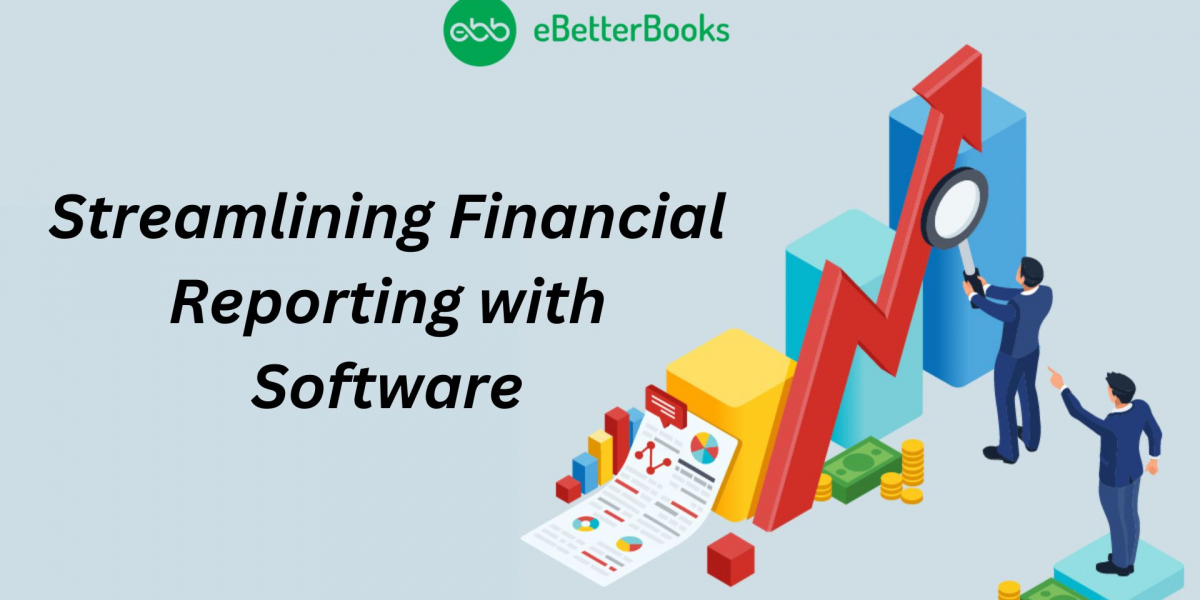In today's fast-paced business environment, financial reporting plays a crucial role in decision-making, ensuring transparency, and maintaining compliance with regulatory standards. However, traditional financial reporting processes are often time-consuming, prone to errors, and can be a major drain on resources. So, how do you streamline financial reporting processes and increase efficiency? In this guide, we'll walk you through the most effective strategies to optimize your financial reporting, from automation and data integration to the use of real-time reporting and cloud-based solutions.
Understanding Financial Reporting
Financial reporting refers to the process of disclosing an organization's financial performance over a specific period. It involves the preparation of essential documents such as income statements, balance sheets, and cash flow statements. These reports are not only crucial for internal decision-making but are also required by external stakeholders like investors, creditors, and regulatory bodies.
The role of financial reporting in business decisions cannot be overstated. Accurate and timely reports help management assess performance, identify growth opportunities, manage risks, and ensure the company stays on the right path financially. For these reasons, streamlining financial reporting processes becomes essential to improve efficiency and reduce unnecessary delays.
Common Challenges in Financial Reporting
Despite its importance, many organizations face significant challenges in financial reporting. Some of the most common issues include:
- Time-Consuming Manual Processes: Many businesses still rely on manual data entry and spreadsheet calculations, which can be both slow and error-prone.
- Lack of Data Integration Across Departments: Different departments often use separate systems, leading to fragmented data and inconsistent financial reports.
- Inconsistent Financial Data and Errors: Human errors, duplication of efforts, and incomplete data are frequent problems in traditional reporting systems.
These challenges not only affect the accuracy of financial reports but also drain resources and time, making the reporting process less efficient.
Benefits of Streamlined Financial Reporting
Streamlining financial reporting offers a range of benefits that can significantly enhance the overall efficiency of an organization. These include:
- Time-Saving Advantages of Automation: Automating financial reporting processes eliminates the need for manual data entry, drastically reducing the time spent on generating reports.
- Improved Accuracy and Decision-Making: By minimizing human error and ensuring data consistency, streamlined processes lead to more accurate financial reports that support better decision-making.
- Enhanced Compliance and Reduced Risks: With automated checks and balances in place, businesses can ensure that their financial reporting complies with all necessary regulations, reducing the risk of fines or penalties.
The Role of Automation in Financial Reporting
Automation is revolutionizing the way financial reports are prepared, analyzed, and delivered. Modern financial reporting software can automatically pull data from various sources, generate financial statements, and even perform initial analysis. This not only saves time but also reduces the chances of errors due to manual input.
Automation tools are designed to handle repetitive tasks, such as data consolidation, report generation, and financial reconciliations, allowing finance teams to focus on more strategic activities. Whether it's generating monthly reports or preparing for year-end audits, automation can significantly streamline the process.
Best Practices for Automating Financial Reporting
When selecting automation tools, it's essential to consider a few key factors:
- Compatibility with Existing Systems: Choose software that integrates seamlessly with your current accounting or ERP systems to avoid disruptions.
- Scalability: Ensure the tool can scale with your business needs, whether you're a small business or a large enterprise.
- User-Friendliness: The software should be easy to use, with intuitive interfaces that require minimal training.
Additionally, automation should be rolled out in phases to ensure smooth integration with existing financial systems.
Data Integration and Centralization
One of the biggest obstacles to efficient financial reporting is fragmented data. When financial data is stored in different systems across departments, consolidating it into a cohesive report can be challenging.
Integrating and centralizing data ensures that all financial information is stored in one place, providing a single source of truth for reporting. This eliminates the need for manual data reconciliation and reduces the chances of inconsistencies or errors.
Implementing Cloud-Based Financial Solutions
Cloud-based financial reporting solutions offer a flexible, scalable, and cost-effective way to streamline financial processes. These systems allow businesses to access real-time financial data from anywhere, making it easier to generate reports on demand. Additionally, cloud solutions are typically more secure and come with automatic backups, ensuring that sensitive financial information is always protected.
Financial Reporting Templates and Dashboards
Another way to streamline financial reporting is by using templates and dashboards. Standardized templates help ensure consistency across reports, while dashboards provide a real-time view of key financial metrics. These tools enable finance teams to quickly identify trends, spot anomalies, and make data-driven decisions.
Real-Time Reporting for Better Decision-Making
Having access to real-time financial data is crucial for businesses looking to make informed decisions. Real-time reporting tools allow organizations to monitor their financial performance in real time, making it easier to identify potential issues before they become significant problems.
Improving Data Accuracy Through Validation
Data validation is critical to ensuring the accuracy of financial reports. By implementing automated checks, businesses can significantly reduce the chances of errors or inconsistencies. For example, validation rules can be set up to flag any discrepancies in data, ensuring that only accurate information is used in reports.
Financial Reporting Compliance
Compliance with financial regulations is a top priority for any business. Streamlined reporting processes can help ensure that your organization meets all regulatory requirements by automatically incorporating the necessary compliance checks into the workflow. This reduces the risk of non-compliance and helps businesses avoid potential fines or legal issues.
Key Performance Indicators (KPIs) in Financial Reporting
Key Performance Indicators (KPIs) are essential for tracking a company's financial health. When selecting KPIs, it's important to choose metrics that align with your business objectives. Common KPIs include revenue growth, profit margins, and return on investment. By focusing on the right KPIs, businesses can gain deeper insights into their financial performance and make more informed decisions.
Training and Change Management
Introducing new financial reporting tools and processes requires careful planning and training. It's important to provide adequate training for your finance team to ensure they can effectively use the new systems. Additionally, encouraging user adoption through clear communication and ongoing support can help smooth the transition.
Outsourcing Financial Reporting Tasks
In some cases, outsourcing financial reporting tasks to a third-party provider may be a more efficient solution. Outsourcing can be particularly beneficial for smaller businesses that lack the resources or expertise to handle complex reporting processes in-house. However, it's important to carefully evaluate potential outsourcing partners to ensure they have the necessary qualifications and experience.
Continuous Improvement in Financial Reporting
Streamlining financial reporting is not a one-time effort. To maintain efficiency, businesses should regularly review and optimize their reporting processes. Staying up-to-date with the latest financial reporting trends and technologies can help ensure that your organization continues to operate efficiently.
Conclusion
Streamlining financial reporting processes is essential for improving efficiency, accuracy, and compliance. By embracing automation, integrating data, and adopting cloud-based solutions, businesses can significantly reduce the time and effort required to generate accurate financial reports. Regular reviews and continuous improvements will help ensure that your reporting processes remain effective over time.
Frequently Asked Questions (FAQs)
1. What is financial reporting?
Financial reporting involves preparing financial statements that reflect a company's financial performance and position over a specific period. These reports help businesses make informed decisions and are often required by external stakeholders.
2. How can automation improve financial reporting?
Automation reduces manual tasks such as data entry, consolidates information, and generates reports faster, with fewer errors, allowing finance teams to focus on strategic analysis.
3. What are the benefits of using cloud-based financial reporting systems?
Cloud-based systems offer real-time data access, scalability, improved security, and the ability to generate reports from anywhere, which increases flexibility and efficiency.
4. Why is data integration important for financial reporting?
Data integration ensures that all financial data is stored in a unified system, reducing inconsistencies and errors, and providing a single source of truth for reporting.
5. What are financial reporting KPIs?
KPIs are metrics used to track and evaluate a company’s financial performance. Examples include revenue growth, profit margins, and return on investment.
6. When should a business consider outsourcing financial reporting?
Businesses may consider outsourcing when they lack the resources or expertise to handle complex reporting tasks, or if they want to focus on core activities.









